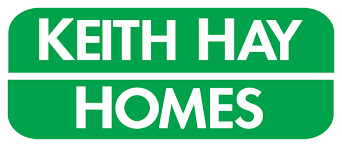The speculation about whether or not the Reserve Bank will eventually impose formal caps on debt-to-income (DTI) ratios for new mortgage lending has ebbed and flowed for quite some time. Indeed, it’s already been about 18 months since the Minister of Finance accepted the RBNZ adding DTIs into their toolkit (June 2021), having previously asked for analysis from the RBNZ around potential impacts as early as February last year. The fact that the RBNZ already has the ability to use DTIs may make this issue less susceptible to the political cycle.
In the past few weeks, however, we’ve had updated guidance from the RBNZ, which didn’t perhaps tell us much new about the actual structure of DTIs, but did give a fairly clear indication that they intend to impose DTIs, and the timing – from early 2024.
So what are the key points to be aware of? In a nutshell, DTIs effectively put a ‘hard stop’ on how much debt someone can obtain at any time. After all, it’s difficult to increase your income overnight, so DTIs limit short-run borrowing capacity and hence how many properties somebody can own. This is quite different from the loan-to-value ratio rules, which allow continued purchases, provided that the current properties within a portfolio are rising in value and providing new equity for the borrower.
In many ways, investors stand to be the hardest hit by any DTI rules. Indeed, imagine you have a $100,000 income, an existing mortgage on your own home of $400,000, and operated in a world where the DTI was capped at seven. This means you could have total debt of $700,000, or only $300,000 more than at present. That figure doesn’t go far, even after recent price falls.
On the plus side, the RBNZ indicates that rental income won’t be given a haircut under the DTI rules (i.e. 100% of rents will be counted towards income), unlike its treatment for serviceability testing. That’s a win for investors, but maybe not a huge one.
Indeed, the key issue for investors is that they tend to borrow at high DTIs more often than other groups. However, there are silver linings here too. First, having previously hinted at differential caps for first home buyers (e.g. seven) versus investors (e.g. six), the RBNZ now seems to have settled on a flat rate, maybe seven.
And second, as banks have got more cautious, borrowers have also pulled back, and mortgage rates have risen (which naturally caps how much debt somebody can service from a given income), the actual high DTI lending flows are already dropping. For example, nearly 40% of investor lending late last year had a DTI >7. Now, that figure is down to just 13% (albeit still higher than the first home buyer share of less than 2%).
In addition, there’ll likely be speed limits. In other words, a certain share of lending will probably be outside the DTI cap, just as it is for the current LVR rules. This is where differentiation could come in, though, with owner-occupiers potentially having a larger allowance than investors. And finally, new-builds may be exempt too – a continued opportunity for investors, given they also have tax advantages over existing properties and reduced deposit requirements.
Nothing is set in stone yet, but formal caps on DTIs seem likely from early 2024 – and maybe in advance if the banks themselves act early. This will significantly change NZ’s mortgage lending landscape and will be another challenge for investors.
However, high DTI lending flows are already easing, and it’s conceivable that the caps won’t be particularly binding straightaway in early 2024. Instead, they may dampen the next upswing if/when it occurs. And finally, quid pro quo, watch for the LVR rules to be loosened simultaneously as DTIs are introduced.

Kelvin Davidson
Kelvin Davidson is the Chief Economist of CoreLogic New Zealand.















Add Comment